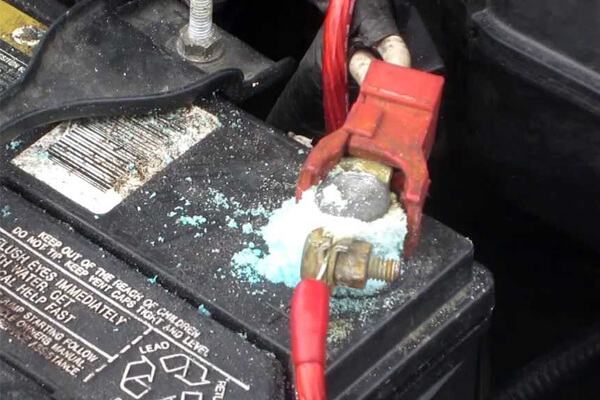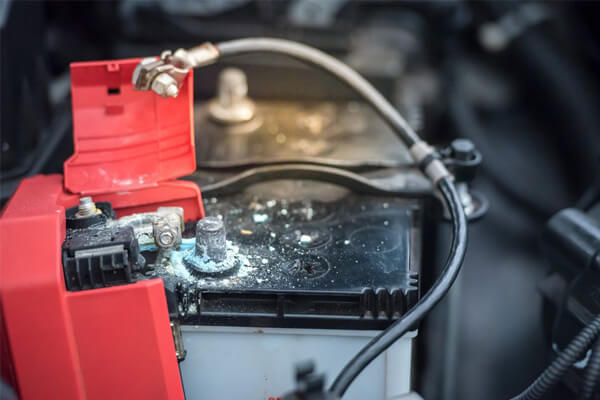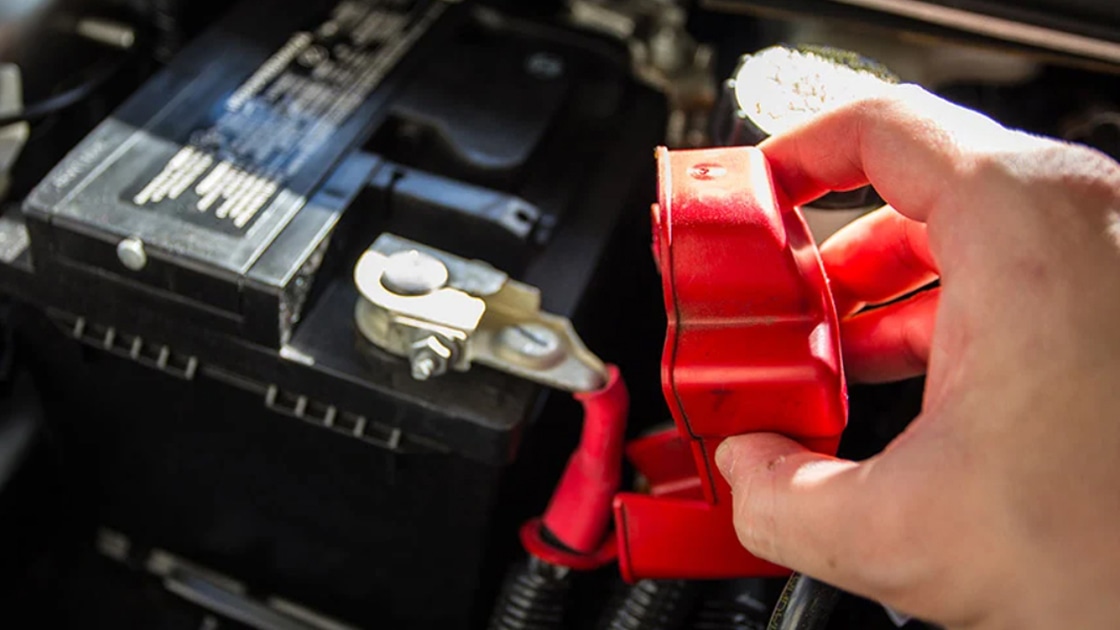Intro
Are you looking for how to clean car battery terminals? In fact, you are like most people, you probably don’t think about your car battery until there’s a problem. If you’ve ever had to change a car battery, you know how dirty the terminals can get.
A car battery is a type of rechargeable battery that supplies electric energy to an automobile. The main function of the battery is to power the starter and ignition system, which in turn starts the engine. It also supplies electrical power when the engine runs idle or while driving without using other vehicle systems such as air conditioning or heating.
In addition, it provides power for lights and accessories such as stereo and cell phone chargers while the engine is off. Therefore, if you find your car’s headlights dimming even though you can still hear your music playing on your radio at normal volume levels, then there might be a problem with your car’s battery terminals. Cleaning them will fix this issue by preventing corrosion from building up on these parts causing damage to important. If you need help with cleaning car battery terminals, then this article has all the information you need!
Preparing instruments
- Wire brush or sandpaper and an old toothbrush
- Protective Gloves
- Baking soda
- Water
- Rag
- Petroleum
- Anti-corrosion spray

Corrosion of battery terminals
How to Clean Car Battery Terminals
Car battery posts are notorious for being tarnished and corroded to the point of barely conducting electricity.
Nothing holds down the voltage potential of your 12-volt system better than a direct connection between your freshly charged battery and your well-running engine or ignition system. A well-connected path allows power to flow freely from the positive post inside the battery all the way through cables, switches, fuses, relays, and ultimately the starter motor.
As you can see, car battery terminals when tarnished and corroded not only harm the electrical connection but also causes other unnecessary problems.
Here is a typical scenario where the cause of failure was due primarily to corrosion build-up on both sides of the 12-volt connection. This happens often enough to make it worthwhile to learn how to clean car battery terminals properly so you don’t have to take your vehicle in every few months. If you do need someone to clean batteries, get them done at an auto parts store near you. They can use special tools which won’t short out your electrical system or create sparks like I will be demonstrating below.
Step 1: Check the battery condition
Lifting the hood of your car and assessing its battery is a necessary step to take before cleaning. You do not need to remove any panels, but you should open up the engine compartment if possible for ease in accessing this area. Locate the battery and then visually check all aspects from the top in the direction of placing the terminals in the housing itself (located inside). If everything is fine with no cracks or leaks then at least now we know the old condition of the battery!
When something doesn’t look right like a bulging or cracked or leaking battery, skip the cleaning and buy a new one at your local auto parts store.

Check battery condition
Step 2: Assess the degree of corrosion on the battery terminals and cables
Safety First Always disconnect the terminals from both the positive and negative posts on your battery. Wear safety glasses when grinding or cutting metal, including nuts and bolts.
Check the battery terminals and connection cables for corrosion, scale accumulation, or sulphation.
Corrosion of cables and terminals can be a concern.
Corrosion can cause the terminals of your car’s battery to loosen, affect battery performance, and make it difficult or impossible to start the engine, so it’s important to clean them.

The battery terminals and the connecting cables are corroded, scale build-up or sulfide build-up
When the connecting cable ends are excessively corroded, the solution for you is to replace them to avoid future problems.
If the battery terminals and connection cable terminals are slightly corroded or worn, follow our instructions to clean them.
Tips: Buying a Replacement Cable: If you’re planning to pick up replacement cables, here are the values of most car battery terminals. The positive cable is usually red (+) and the negative cable is either black (-) or has a white stripe closer to the terminal end. Your 12-volt car battery posts have larger nuts with recessed holes which are used screw-down bolt-type clamps onto exposed metal studs on top of each post. Keep in mind that some terminals have side-mounted studs instead of exposed posts so be sure to check for this if your vehicle doesn’t have exposed posts before buying new parts. You can also use conventional automotive spade connectors as long as they are the right size to fit over the posts.
Step 3: Cleaning Car Battery Terminals
Disconnect both positive and negative cable clamps from the battery terminals one at a time following the procedures in Step 2. Once each terminal is exposed, use a round adjustable wrench or socket wrench to loosen each bolt. Make sure you have good access before turning them so you don’t strip out the head of the bolt due to a lack of space for leverage.
Once both sides are loose, remove each bolt then use an abrasive pad or you can use a wire brush or an old toothbrush to remove any corrosion on the top of the battery post. I prefer using Scotch-Brite non-scratch pads because they are tough enough not to get eaten up too fast while still being safe to use on plastic covers and other potential contact points. Make sure you remove any loose or flaking material from both sides of the battery terminal.
To clean the corrosion we use a detergent from a mixture of baking soda and water (30-40ml of baking soda mixed with 15ml of water) applied to the battery terminals and corroded parts. Let the mixture sit for about 5-7 minutes so that the cleaner can soak in and remove the stain.
Then use a wire brush to remove stains and corrosion. Rinse the battery terminals, and cable connections with a little water, and dry them completely with a clean and dry cloth.

Use a wire brush to remove stains and corrosion
We can repeat the above cleaning steps 2-3 times to completely remove corrosion on the battery terminals and connection cables.
If there is a lot of corrosion build-up, you might have to tackle one side at a time so it’s easier to get your cleaning tool down in the recess where the bolt goes through. Don’t be surprised if this is so tight that you can barely fit an abrasive pad inside, but don’t worry because you won’t need to go far for this job.
Once each bolt hole is clean on both sides, re-attach the positive cable clamp first then tighten down the nuts with either pliers or a small crescent wrench. The bolts are usually made of soft metal so it’s best not to over-tighten them.

Completely dry the battery terminals with a clean cloth
Step 4: Apply petroleum to the battery terminals
Once the battery terminals are clean and completely dry, apply a little petroleum to them. This will help lubricate the terminals, prevent corrosion from returning, and strengthen the connection of the battery.
You should also not apply too much kerosene as it will affect the contact between the battery terminal and the connection cable. In addition, you can also use anti-corrosion spray to spray on the battery terminals.

Apply petroleum to the battery terminals
Step 5: Finish the Job by Cleaning the Cable Ends
You don’t have to do this, but I always clean both cable ends with a wire brush to remove any loose material from their clamps. Be careful not to touch anything metal because there is a risk you’ll create a spark due to the high voltage in your car battery. Also, try not to bend or crimp either cable while cleaning it.
After this step, just reattach each clamp and make sure all four nuts are tight before starting your vehicle. If your garage has good ventilation, let it run for five minutes before driving away so things can heat up and expand if needed. Monitor the liquid level in your battery during this time.

Reattach the cable ends carefully and securely
Related:
- Tricks To Keep Your Car Battery Alive When Not In Use For Long Periods Of Time Or In The Cold Of Winter
- “Warning Signs My Car Battery Is Dying” – How To Recognize The Symptoms?
- Why Does My Car Battery Keep Dying? 6 Main Reasons & Expert’s Guide
- How Long Do Car Batteries Last? When Should You Replace Them?
FAQs
What can dirty battery terminals cause?
Corroded battery terminals are one of the most common causes of car engines not starting. If you see black or purple residue around your vehicle’s batteries, it could be an indication that they’re damaged and need replacing soon!
A buildup, in this case, will result not only in bad electrical test signals but also in further complications with other parts such as electronics wiring which may lead to more expensive repairs down the road- so get rid now before things get worse!
Can vinegar or lemon juice be used to clean the battery terminals?
– Yes, both are acidic which can help dissolve corrosion. The acids in these fluids will neutralize the alkaline discharge to prevent any further corrosion. Just put one or two drops on top and wait for the reaction to dissolve the corrosive deposits.
– Alternatively, you can also use baking soda to clean corroded battery terminals.
Do I need a new battery if there is corrosion?
You need a new battery if the corrosion eats away at it too much. Inspecting your car’s terminals will allow you some time before they are completely destroyed by this process of deterioration
The signs that show an issue with corroding cables or electrical contacts include powdery white substances around them which could indicate early stages in its development as well blue blobs on metal surfaces caused due to the electric current running through water containing dissolved oxygen.
Can corroded terminals drain the battery?
Battery corrosion is a big problem for most rechargeable batteries. It causesеdrainage of power and shortens their life span, but it’s easy enough to fix with some careful cleaning at the terminals!
What are the three most common causes of car battery failure?
– Corrosion caused by poor-quality water.
– Corrosion is caused by low electrolyte levels.
– Electrical current leaking through the wiring harness or connectors.
How often should you clean the terminals on a car battery?
You should regularly check your car battery and clean the battery terminals every 3 – 6 months. Or whenever you see signs of corrosion make sure the battery is performing at its best.
Can you use petroleum jelly on your car battery?
– Yes. It will help keep the terminals free of corrosion, which is especially important in winter when salt can build upon them.
Conclusion
To make sure your car battery is ready for every ride, try cleaning and servicing it. Regularly check the liquid level in your battery to make sure it has enough working water before starting your journey. Be aware of any signs of corrosion on the battery terminals or connecting cables which can lead to poor performance and electrical problems. Not many people think about how important it is to clean their car battery terminals, but this simple maintenance task can help keep your vehicle running strong. So how to clean the car battery terminals? You can refer to our article, these are the best ways to clean car terminals effectively and safely.
Thank you for reading!
Further Reading:
WHAT'S NEW
The best AGM battery chargers will be the ideal option to revive your flat battery without relying on professional help. These handy high-tech chargers are extremely beneficial because they offer...
The Genius Boost GB40 is popular because of its ability to help boost your vehicle when it has battery issues. Many of our customers wonder why the Noco GB40 can work greatly like so. So, we have...

